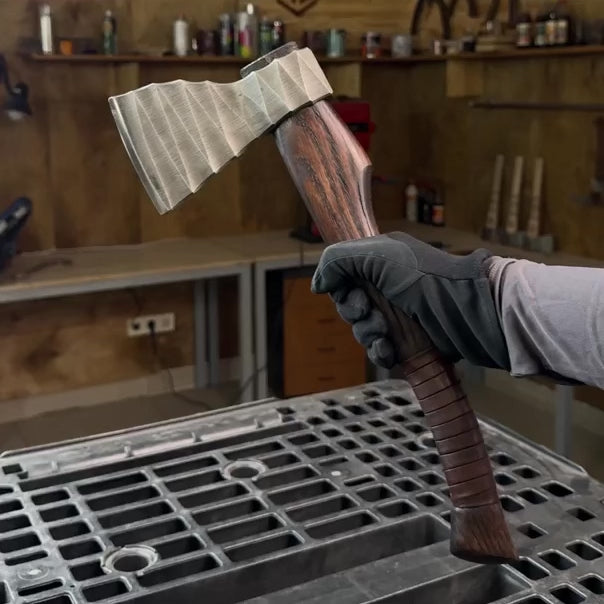
The Art of Axe Maintenance: Keeping Your Blade Sharp and Durable
An axe is one of the most reliable tools, but even the toughest tools require proper care to ensure longevity and efficiency. Whether you're using it for chopping wood, survival, or craftsmanship, maintaining your axe properly will keep it sharp, rust-free, and functional for years.
Protecting Against Corrosion
The number one enemy of an axe is corrosion. Since most high-quality axes are made from high-carbon steel, they are prone to rust if exposed to moisture. To prevent this:
- Always wipe the blade dry after use.
- Use Ballistol - it’s easy to find in the U.S., and most importantly, it’s very safe for the item due to its simple formula. It’s suitable for metal, leather, and won’t harm the wood either.
- OR you can apply a thin layer of oil or grease to the blade. Silicone spray, motor oil, or bicycle chain oil work well (avoid organic oils like sunflower or olive oil, as they can turn rancid).
- Store the axe in a dry place, away from excessive humidity.
We don’t recommend using WD-40, as we can’t predict how it will react with the special coating on our products. It might help, but it could also cause damage!
Proper Storage
Wooden handles can shrink or expand based on humidity levels. To avoid this:
- Store your axe at room temperature in a dry environment.
- Avoid placing it near heaters or radiators, as extreme heat can dry out and crack the handle.
- Do not keep your axe in a damp basement, as excess moisture can weaken the wood and cause rust.
Sharpening for Maximum Performance
A sharp axe ensures clean cuts and safer usage. Though high-quality axes hold an edge well, periodic sharpening is necessary. When sharpening:
- Use sandpaper, sharpening stones, or a sanding belt with abrasiveness between 600-1500 grit.
- Maintain the original edge angle to ensure optimal cutting performance.
- Regularly inspect the blade for chips or dull spots and sharpen as needed.
Taking Care of the Handle
Most traditional axes feature wooden handles, which require care to prevent cracks and wear:
- Apply boiled linseed oil to the handle every few months to protect against moisture.
- Keep the handle clean and free of dirt before oiling.
- Avoid exposing it to extreme weather conditions.
For composite handles, maintenance is easier, but always check for cracks or wear that could affect performance.
The Role of Leather Sheaths
A leather sheath helps protect the axe head from damage and ensures safety during transport. To keep your sheath in good condition:
- Apply a water-based wax to prevent drying and cracking.
- Wipe off any excess product and allow it to dry completely before storing your axe inside.
Using Your Axe the Right Way
Proper usage extends the life of your axe:
- Avoid striking the back of the axe head with a hammer to free it from wood; instead, use a wedge.
- Different axes serve different purposes — make sure to use yours accordingly (e.g., don’t use a wood-cutting axe for splitting bones or metal).
Quality Handmade Axes Built to Last
At AncientSmithy, we craft high-quality, handmade axes designed for durability and performance. Whether you're an outdoorsman, craftsman, or collector, our axes are built for function and longevity. With proper care, your axe will not only remain a reliable tool but also a piece of craftsmanship that stands the test of time.













